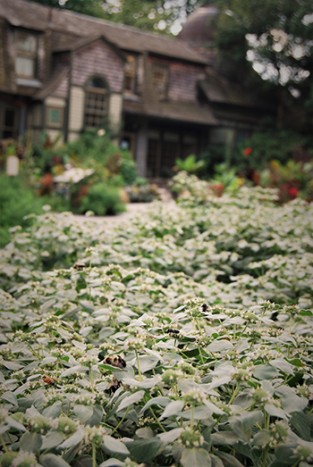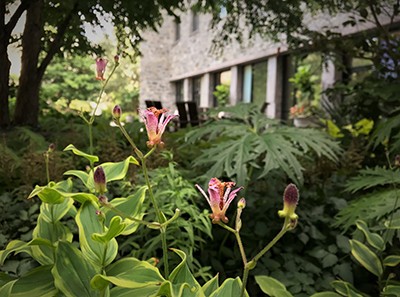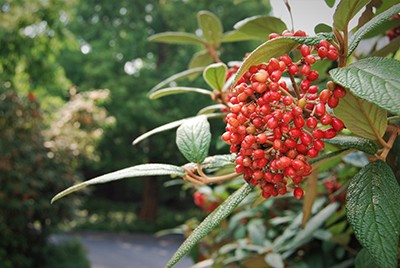Plants of the Week: August 7
Tricyrtis formosana ‘Autumn Glow’
I’ve walked past this little plant dozens of times, subconsciously waiting for it to do something special. Yes, it has an interesting shape, and the leaves are nicely variegated, but it never stood out as a plant that would do much more than provide a hardy, naturalizing groundcover. Tricyrtis formosana proved me wrong.
Perched at the top of 2’ tall stalks, striking clusters of orchid-like amethyst-purple flowers with dark spots begin blooming towards the end of July and continue to bloom into the fall. T. formosana, also commonly known as toadlily, originates from Japan.
It is best grown in Zones 6a to 9b in an evenly rich, moist, slightly acidic soil. ‘Autumn Glow’ does not perform well in deep shade and much prefers to be planted somewhere that receives a couple of hours of sun.
This massing plant will spread by rhizomes, forming healthy colonies if planted where it is happy. An example of how to use Tricyrtis formosana in the garden can be found in Isabelle Cosby Courtyard.
Several species of Tricyrtis will be available at the Scott Arboretum Selections: Fall Sale on Sept. 15 to 17 so you can try this great plant in your garden. Photo Credit: R. Armstrong

Pycnanthemum muticum
There is always some hesitation when I think of planting mint in my garden. I’ve spent hours digging it out, trying to prevent it from completely swallowing all of my other plants.
Luckily, Pycnanthemum muticum is here to satisfy any urge for mint. With it’s silver-green foliage and pink-white flowers, mountain mint is a low maintenance, clump-forming perennial that brings, what seem to be, all of the pollinators in the area to the backyard. P. muticum is an excellent nectar and pollen source and provides a dense ground cover for wildlife. It is also deer resistant. P. muticum naturalizes in full sun to part shade in Zones 4 to 8. When planted in masses, the silver-green leaves give an appearance of being dusted with a white powder.
The leaves can be used for tea, insect repellent, or simply for ornamental purposes. Mountain mint is best left to naturalize in native plant gardens, cottage gardens or meadows but can also be root pruned with a spade in spring if naturalizing is unwanted. An example of Pycnanthemum muticum can be found outside of the Cunningham House and the Wister Center. This plant is available at the Scott Arboretum Selections: Fall Sale on September 15 to 17. Photo Credit: R. Armstrong
Viburnum rhytidophyllum ‘Cree’
I’ve always loved the texture of the leaves of leatherleaf viburnums. They never fail to remind me of some sort of reptile skin. Since it’s an evergreen shrub, I get to experience the leaves at any time of year; although, during the summer, V. rhytidophyllum has bright red fruits that eventually turn shiny black, which form after white blooms.
Viburnum rhytidophyllum ‘Cree’ is more compact with dark green leaves, which do not curl to the extent of the species, implying ‘Cree’ is hardier. Growing to be 8 feet wide and high, this slow growing viburnum requires acidic, moist, well-draining soil in full sun to part shade. Viburnum rhytidophyllum can be found behind Parish hall. Photo Credit: R.Armstrong







No Comments